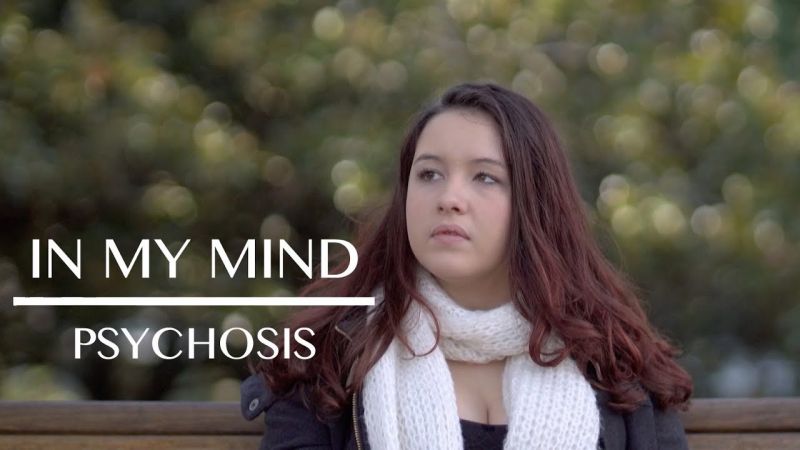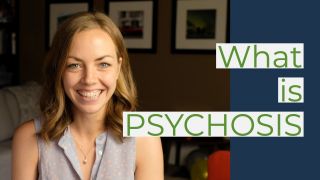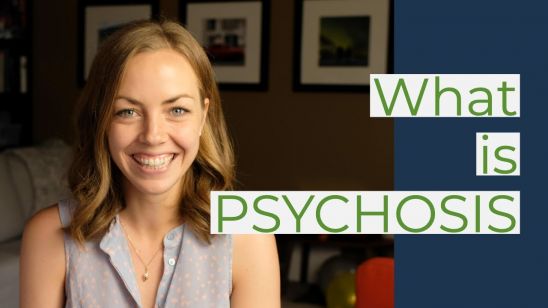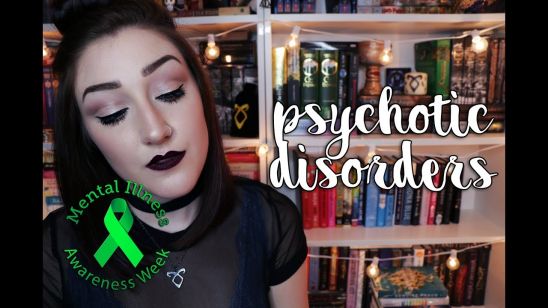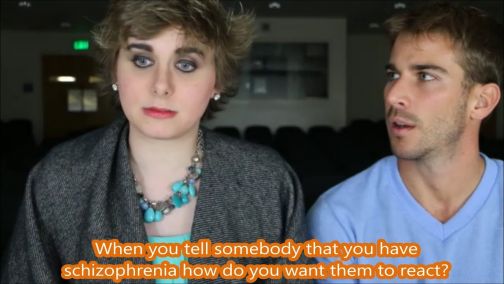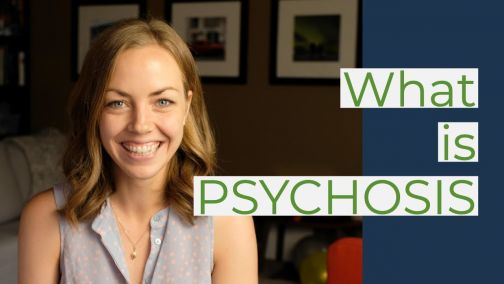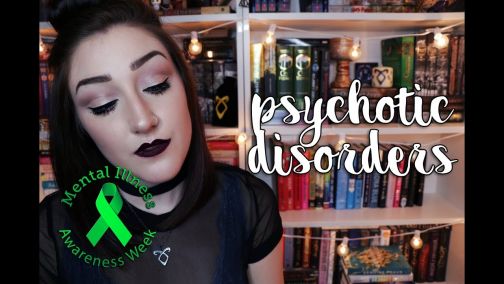Schizophreniform Disorder
A thought disorder
What is it?
Thought disorders, like schizophrenia, impact a person’s ability to think clearly and interpret reality in “normal” ways. People with schizophrenia experience delusions, hallucinations and disordered thinking. They often struggle to speak coherently, manage their emotions, make decisions and interact with others because of these symptoms.
Schizophreniform disorder comes with all the same symptoms as schizophrenia, except it lasts for a short period of time — six months or less. If symptoms are still present after six months, a person is diagnosed with schizophrenia or another psychotic disorder. Schizophreniform affects men and women equally, although it often appears in men between 18 and 24, and in women between 24 and 35.
What are the symptoms?
Schizophreniform affects how people think, feel and behave over a short period of time. People with the condition may seem as if they’ve lost touch with reality, and believe in strange or illogical things. Symptoms are often broken into three categories — positive symptoms (psychotic behaviors), negative symptoms (disruptions to mood and behavior) and cognitive (mental processing).
Positive symptoms:
- Delusions
- Hallucinations
- Disorganized thinking
- Disorganized motor behavior
Negative symptoms:
- Having a “flat affect” (i.e. unemotive facial expressions or tone of voice)
- Reduced sense of pleasure in everyday activities
- Difficulty beginning and sustaining activities
- Reduced speaking
Cognitive symptoms:
- Poor “executive functioning” (i.e. understanding information and using it to make decisions)
- Difficulty paying attention
- Problems with “working memory” (i.e. being able to use information immediately after learning it)
These symptoms can vary in frequency and intensity. Oftentimes, schizophrenia is suspected at the onset of symptoms. A person is re-diagnosed if those symptoms fade by the end of a six month period.
What are some common warning signs?
Schizophreniform can look different in different people. The most obvious indicator of the disorder, is a sense that someone has lost touch with reality. Unlike schizophrenia which often comes on gradually, symptoms of schizophreniform disorder may appear suddenly and get worse over a short period of time.
If you’re concerned that a loved one has Schizophreniform Disorder, ask yourself the following questions:
- Are they more withdrawn and averse to socializing?
- Have they lost interest in the things they used to care about?
- Are they speaking in strange ways, such as very rapidly, incoherently, or by stringing words and phrases together that don’t make sense?
- Do they seem paranoid or on edge? Have they expressed fears about people or scenarios that seem unwarranted?
- Have they mentioned “hearing voices”?
- Have they become extremely religious or adopted very strange religious beliefs?
- Do they seem vacant or empty when you talk to them? Do they exhibit little range in emotion?
- Are they forgetting things easily or misremembering past events?
- Have their mannerisms changed drastically?
- Are they staying up late to research bizarre conspiracy theories or religious ideas? Have they become obsessed with these ideas?
- Have they expressed having hallucinations?
- Do they talk to people who aren’t there?
- Do they have inappropriate emotional responses to different scenarios, such as becoming angry and hostile very quickly?
- Do they seem apathetic to life and out of touch with their responsibilities and relationships?
These behaviors can’t confirm a diagnosis, but they do hint at one. If you feel comfortable doing so, talk to your loved one about this behavior and why you’re concerned.
What causes Schizophreniform Disorder?
The exact causes of schizophreniform are unknown. Doctors believe a range of factors play a role in its development, including:
- Genetics: People are more likely to develop Schizophreniform Disorder if they have a family history of the disorder or other forms of psychosis.
- Brain chemistry: Issues with certain neurotransmitters, including dopamine and glutamate, have been linked to the condition.
- Environmental: Being exposed to certain viruses or being malnourished in the womb may increase the risk of developingSchizophreniform Disorder later in life. There is also some evidence that traumatic experiences, such as being abused or raped, can trigger symptoms.
- Substance Abuse: Some studies show a correlation between heavy drug use and psychosis.
How is it treated?
Treating schizophreniform often involves a combination of psychotherapy and medication. Healthy lifestyle habits and social support are recommended as well. Once symptoms begin to subside, treatment should be continued for 12 months, allowing them to slowly wean off their medications and keep an eye out for any signs of relapse.
Psychotherapy is a broad term that refers to a range of therapeutic approaches. Common models for coping with schizophreniform disorder are:
- Individual psychotherapy: One-on-one sessions that help people better understand and manage their symptoms.
- Cognitive behavioral therapy (CBT): A therapeutic model that challenges negative thinking patterns and behaviors. In CBT, a therapist will help a person establish healthy coping mechanisms for their delusions, hallucinations.
- Cognitive enhancement therapy (CET): Therapy that teaches people how to pick up on social cues and triggers, and improve their memory, attention and thought organization.
Psychosocial therapies may be recommended as well. These help a person function more effectively in social environments. A handful of approaches can be beneficial, including social skills training, rehabilitation, self-help groups, assertive community treatment (ACT), coordinated specialty care (CSC), and social recovery therapy. You can learn more about those here.
Medication is considered a cornerstone of treatment, with antipsychotics being the go-to for addressing schizophreniform symptoms. While effective, they are known to have heavy side effects, which may make people hesitant to take them.
There are two classes of antipsychotics — first generation (conventional) and second generation (atypical). First generation antipsychotics are older, cheaper and come with more substantial side effects. Second generation are newer and come with less.
- First generation/conventional: Chlorpromazine (Thorazine), Fluphenazine (Prolixin), Haloperidol (Haldol), Loxapine (Oxilapine), Perphenazine (Trilafon), Thioridazine (Mellaril), Thiothixene (Navane)Trifluoperazine (Stelazine)
- Second generation/atypical: Aripiprazole (Abilify), Asenapine (Saphris), Brexpiprazole (Rexulti), Cariprazine (Vraylar), Clozapine (Clozaril), Iloperidone (Fanapt), Lurasidone (Latuda), Olanzapine (Zyprexa), Paliperidone (Invega), Quetiapine (Seroquel), Risperidone (Risperdal), Ziprasidone (Geodon)
It’s important to remember that treatment plans are personalized. If you’re seeking help, make sure you work one-on-one with a doctor to create a plan that fits your needs. Just because a medication or therapy helps someone else recover, doesn’t mean it’ll be the right solution for you. Don’t ever feel guilty about asking for help, taking meds or going to therapy. Addressing your mental health is a productive and courageous thing to do.
How can I help a loved one with Schizophreniform Disorder?
It can be hard to know how to react when someone you love isn’t doing well. Do they want to talk about it, or would they prefer to keep their experiences private? Will you push them away by starting the conversation?
There are no easy answers to these questions. Every person handles their mental health differently. That said, we all want to feel loved and supported. Showing someone that you’re invested in their wellbeing can make a world of difference.
Here are some ways to do so:
- Educate yourself: Read up on symptoms, treatment options, and healthy living recommendations. Try and understand what your loved one is going through so you are better equipped to talk to them about it. This will also make you a valuable resource when it comes time to find treatment.
- Advocate treatment: Asking for help can be hard. Societal stigma often keeps people from opening up to others about their symptoms. Support your loved one by helping them research different treatment methods, or doctors in their area. If they’d like, go to a few sessions with them. Remind them that there’s nothing weird about getting help, and that you’re proud of them for following through.
- Use empathy: The delusions and hallucinations associated with schizophreniform disorder feel very real. Try and refrain from snapping at them when they are in the midst of an episode. Stay calm and remember what they’re going through. Remind them that you’re there for them and that you love them.
- Help them out: People battling a severe mental disorder like schizophreniform disorder, may struggle to keep up with daily responsibilities, such as preparing meals, paying bills, or cleaning up. Make time to do these things with your loved one so they feel supported, and don’t get bogged down by unfinished work.
- Be patient: Don’t take it personally if they lash out at you. They are battling something that’s very hard to overcome. Their distance has nothing to do with who you are as a person. Keep showing up for them even when it feels like it’s not helping. The act alone lets them know that they have people in their life who care.
Loved ones of people with schizophreniform are often asked to help monitor their medication, and look out for signs of a relapse. If you think they pose a threat to other people or themselves, seek immediate help. And finally, remember to take care of yourself. Find counseling of your own if you are struggling to cope with their condition.
What other resources are out there?
Want to learn more, find a doctor, join a support group or speak to a counselor? The below resources might be able to help:
- Schizophrenia and Related Disorders Alliance of America
- Schizophrenia Society of Canada
- Zur Institute
- Crisis Text Line
- BetterHelp
- Psychology Today Directory
- American Psychiatric Association
- Medicaid Eligibility Information
- Open Path Collective
- Resources for POC, LGBTQ+ and disabled individuals
- Anxiety and Depression Association of America
- National Network of Depression Centers
- Medicine Assistance Tool
- NeedyMeds
- Erika's Lighthouse
- Anxiety Network
- Anxiety Central Forums
- National Social Anxiety Disorder Center
Support our work
We’re on a mission to change how the world perceives mental health.
